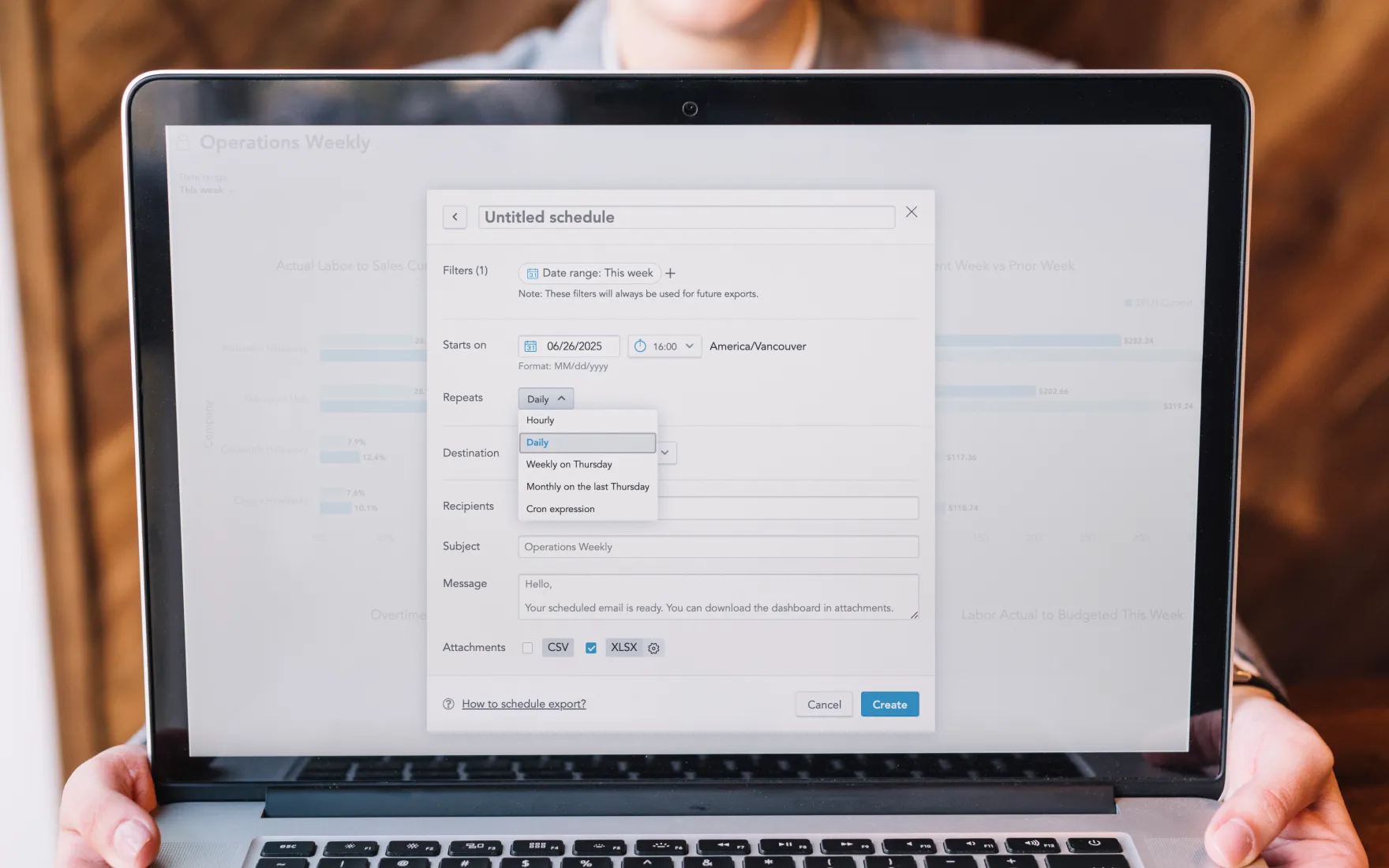How to Retain Seasonal Restaurant Staff: Proven Strategies for Long-Term Success

Seasonal restaurant workers return year after year — if you give them a good reason to. In a fast-paced industry where turnover is high and time is tight, retaining seasonal restaurant staff can be the difference between smooth operations and chaos during peak periods. For restaurant owners and operators juggling short hiring windows, high guest expectations, and labor shortages, the challenge is real — training new people every season strains staff, budgets, and service quality.
Why Is It Important to Retain Seasonal Restaurant Staff?
Rehiring seasonal employees isn’t just convenient — it’s a cost-saving necessity. According to the Society for Human Resource Management (SHRM), the average cost of replacing an hourly employee exceeds $1,500. Factor in onboarding time, reduced productivity, and guest service risks, and the total burden multiplies.
For restaurants, re-engaging past seasonal workers means:
- Reduced onboarding and training time
- Smoother team dynamics and faster ramp-ups
- Consistent customer service during peak times
Returning staff already understand kitchen flow, menu nuances, and company expectations. This continuity translates to faster service, improved upselling, and less handholding on the floor — all crucial wins in a seasonal staffing model. In peak seasons when guest volume spikes and stress runs high, experience pays dividends.
What Seasonal Employee Retention Strategies Actually Work?
A great seasonal experience starts the moment a new hire walks in — not on their first shift, but during recruitment and onboarding. Creating a welcoming and motivating work environment encourages seasonal employees to stick around and, just as importantly, return.
How to Build a Positive Seasonal Culture
Even short-term hires want to feel like part of the crew. To improve hospitality seasonal staffing outcomes, consider these tactics:
- Integrate temps and full-timers: Include seasonal workers in team huddles, outings, and group chats.
- Celebrate wins together: Recognize seasonal contributions in pre-shift shout-outs or staff meetings.
- Promote peer appreciation: Encourage feedback and kudos across the team using structured tools or informal channels.
Compensation and Rewards That Promote Loyalty
Competitive pay is just the beginning. Thoughtful financial incentives help seasonal employees feel valued and motivate them to return.
- End-of-season bonuses tied to performance metrics or completion rates
- Referral programs for temps who bring in friends
- Spot prizes and fun competitions that boost morale during crunch times
These efforts build trust and foster workplace enthusiasm, increasing the likelihood that seasonal hires turn into reliable returnees.
How Can Restaurants Stay in Touch with Seasonal Staff Year-Round?
Many restaurants lose touch with their seasonal employees once the busy season ends. Rather than starting from scratch each year, savvy operators maintain an open line of communication that keeps top talent warm.
- Keep contact information updated through digital HR platforms like Push
- Send friendly check-ins or “save the date” messages before the next season ramps up
- Offer off-season gigs during special events or catering opportunities
How Should Restaurants Structure End-of-Season Check-Ins?
Seasonal exits deserve just as much attention as onboarding. Conducting thoughtful end-of-season check-ins creates a loop of continuous feedback and improvement.
- Run brief exit or stay interviews to identify sentiment and suggestions
- Ask what would make them return next season
- Document insights to refine next year’s hiring, scheduling, and onboarding practices
Use HR platforms such as Push to streamline the process. With centralized employee records, surveys become quick, systemized, and insightful, making it easier to spot trends and respond meaningfully.
How Can Technology Simplify Seasonal Staff Rehiring?
With the right tools, rehiring seasonal restaurant staff can feel like flipping a switch. Platforms like Push Operations allow managers to reactivate records and schedule preferences from previous seasons.
Features in Push That Help Rehire with Ease
- Smart scheduling pulls from past availability and performance data, reducing guesswork
- Cloud-accessible onboarding documents remove the need to repeat paperwork
- HR recordkeeping retains feedback, preferences, and certifications
Streamlining this process not only saves time but also reinforces that returning staff are trusted members of the team — not just temporary hires.
What Role Does Compensation Play in Seasonal Staff Retention?
In tight labor markets, compensation can either make or break restaurant talent strategies. Offering competitive rates, especially during busy seasons or in destination markets, shows respect — and drives interest.
To ensure you are paying competivitely:
- Assess local wage benchmarks
- Implement flexible compensation systems, such as weekly pay or app-based tipping
- Adjust rates seasonally to reflect demand surges and increase staff loyalty
Aligning pay with market conditions positions restaurants as attractive employers—and draws returning staff back with confidence.
How Do You Promote Returnees as Key Talent?
Spotlight your returning seasonal staff to show appreciation and foster loyalty. Elevation leads to engagement.
- Designate veteran seasonals as peer mentors or leads
- Hold returnee “welcome backs” during pre-season meetings
- Use returnees’ experience in onboarding groups to train new hires faster
Recognizing and Rewarding Returnees
Incentivize commitment by offering:
- Loyalty bonuses for multi-season veterans
- Priority scheduling picks or perks like preferred sections
- Growth paths such as cross-training or leadership opportunities
This approach not only retains excellence but also builds a strong seasonal talent pipeline.
What Metrics Should You Track to Improve Seasonal Retention?
Data-backed seasonal employee retention strategies lead to smarter staffing.
Key performance indicators (KPIs) worth tracking include:
- Rehire rates year over year
- Pulse survey completion showing employee engagement
- Employee Net Promoter Score (eNPS) collected at the end of each season
- Time to full productivity, measuring ramp-up speed
- Training efficiency metrics, based on completion times and error rates
Push HR and its built-in analytics dashboard give restaurants a single source of truth for hiring patterns, retention issues, and workforce health, making it easier to plan ahead with clarity.
What Are Common Mistakes That Hurt Seasonal Staff Retention?
Even well-meaning restaurant operators can misstep when managing seasonal teams.
Common Errors Include:
- Failing to make return offers early, losing top talent to quicker competitors
- Overlooking seasonal contributions, making team members feel disposable
- Neglecting adequate onboarding, leading to frustration and fast exits
- Letting compensation stagnate, especially in competitive labor markets
Tips to Avoid These Common Pitfalls
- Hold retention planning meetings ahead of peak season
- Track past performers and schedule re-engagement messages early
- Document team feedback to evolve recruiting and training practices
Small tweaks today can fuel smoother seasons down the line — and help make top performers stick around.
Conclusion: Transform Seasonal Staffing from Headache to High-Performance
Hiring and retaining seasonal restaurant workers doesn’t have to be a constant game of catch-up. With the right mix of culture, communication, and compensation — supported by smart technology — restaurants can convert short-term hires into long-term assets.
Push Operations empowers hospitality teams to streamline seasonal hiring, improve HR workflows, and retain valuable team members year after year. From onboarding automation to smart scheduling, Push helps restaurant leaders focus on what matters most: providing exceptional guest experiences with a team they trust.
Ready to fire up operations? Book a demo with Push to get started.



